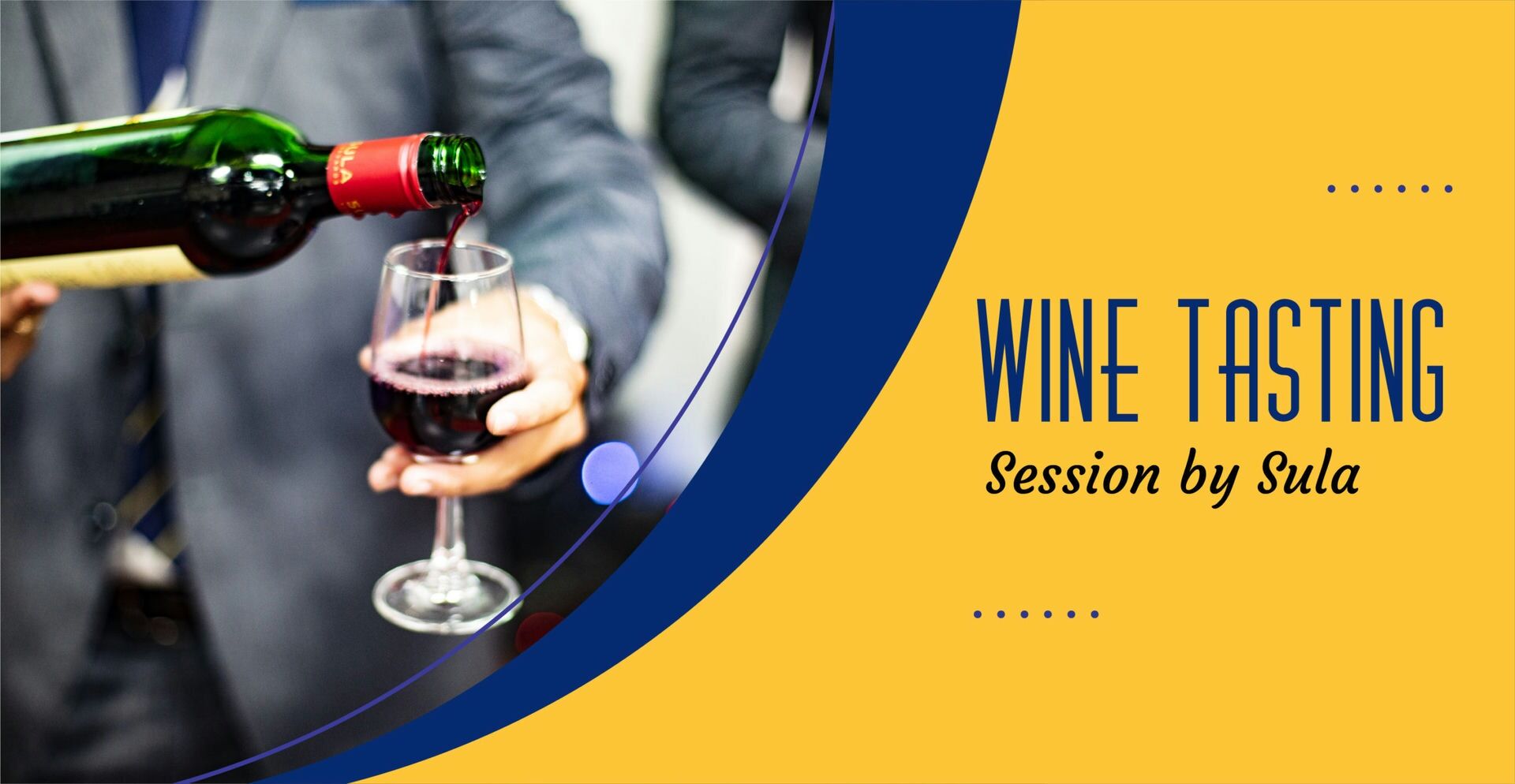An event Wine Tasting Session by Sula has been organized by the Hospitality Department of Inspiria Knowledge Campus, Siliguri focusing on mainly 1st and 3rd-year students of the department. Mr. Soham Poddar who is the Manager-Tasting and Marketing(East) of Sula Wine was the guest speaker for the event.
This session started at 11.30 am with a brief introduction of the speaker by our first sem student Mr. Abhinav Rai and then Mr. Poddar continued with his presentation. As it was a wine tasting session for the beginner of the hospitality management students, Mr. Poddar started with a brief on the wine production process and the journey of Sula in India through a slide presentation. The second phase of the session continued with tasting 3 different Sula wines, which had been brought by him specially. Starting with the sparkling wine followed by white and red wine. Mr. Poddar described how to open a bottle of wine to the consumption pattern clearly to the new minds of the department.
At the end of the session, he answered all the queries from the students and it was obviously an interactive learning experience for all the students present there.
The department head Mr. Anjani Nandan gave the vote of thanks and a memento as a token of appreciation.
Important things students learned from the wine tasting session
1. Flavor of wine
Wine tasing requires huge skill and experience. To identify the right wine and its taste one has correctly sniff and smell it. Through this integrated wine tasting session, the students have accurately identified different flavors of wine that bring good taste and happiness to the table.
2. Essence of wine tasting
Tasting wine can be quite attractive and intriguing for students as they predominantly understand wine as a part of alcohol. However, the essence of wine as an exotic and exquisite drink has many nuances into it that differentiates it from other beverages. Students find it quite overwhelming when tasting wine or being a part of the wine-making environment because it usually involves a serene and distract-free situation where students are able to feel the liquor through their sensory perceptions and feel quite elevated in the overall journey mixed with thrilling emotions and experiences.
3. Elements of tasting wine
Understanding the essence of wine, and the overall process of making it from perceiving to sniffing to tasting to swallowing and savoring can be quite an intriguing experience for a student. Unlike conventional times, with great skills and dedication, a student can perceive not only the detailing of the procedure but also realize the personal taste that need not be quite expensive.
It all starts from the inception. That is, swirling an ounce of wine on a large bowl, to begin with. Students learn to focus on their sensory perceptions by feeling the aroma of it by breathing in through the nose and breathing out through the mouth to get the perfect spark of aroma.
4. Evaluating the colour
A great deal goes with the color of the wine from which the student learns about its timelessness and essence of vintage. It is quite an overwhelming moment for a student in this learning process because it is something that is quite not perceivable in everyday life. Students learn about the intensity of the colour that indicates the diversified presence of fruits. Various sentiments indicate the richness and oldness of the wine. Similarly, students learn a lot about the essence of red wine which grows old with age and stays enchanting metaphorically. Other than this, students also learn a lot about the viscosity of the wine which enables them to understand the presence of alcohol or sugar-added substances in it.
5. Evaluating the taste
It is quite amazing for students to realize that wine tasting and aroma are quite alike. To understand the taste of the wine, there are many aspects that students can imbibe into their knowledge. For instance, a wine’s “structure” is usually identified by the contribution of sugar, tannin, and alcohol presence. Dryness can be measured by the level of sugar present in the glass. Similarly, students also understand that there will be a warming sensation present in presence of alcohol, and tannin is usually understood by the redness and can be quite bitter. Students also learn a lot about the mouth-watering sensation that is present if it has elements of acid present in it.
6. Importance of Terroir
Lastly, this is one of the most important things that helped the students to analyze the essence of winemaking and tasting. Nothing can be achieved without a “sense of place” also known as Terroir. To extract the best resources to make a marvelous wine, background factors like geography, climate, and geology is of utmost importance that helps a student in enlightening themselves during the whole journey. Students mostly learn about the maceration and fermentation processes helps them in analyzing the knowledge of grapes and resources involved in the wine-making process that provides them with a robustly fruitful experience.
